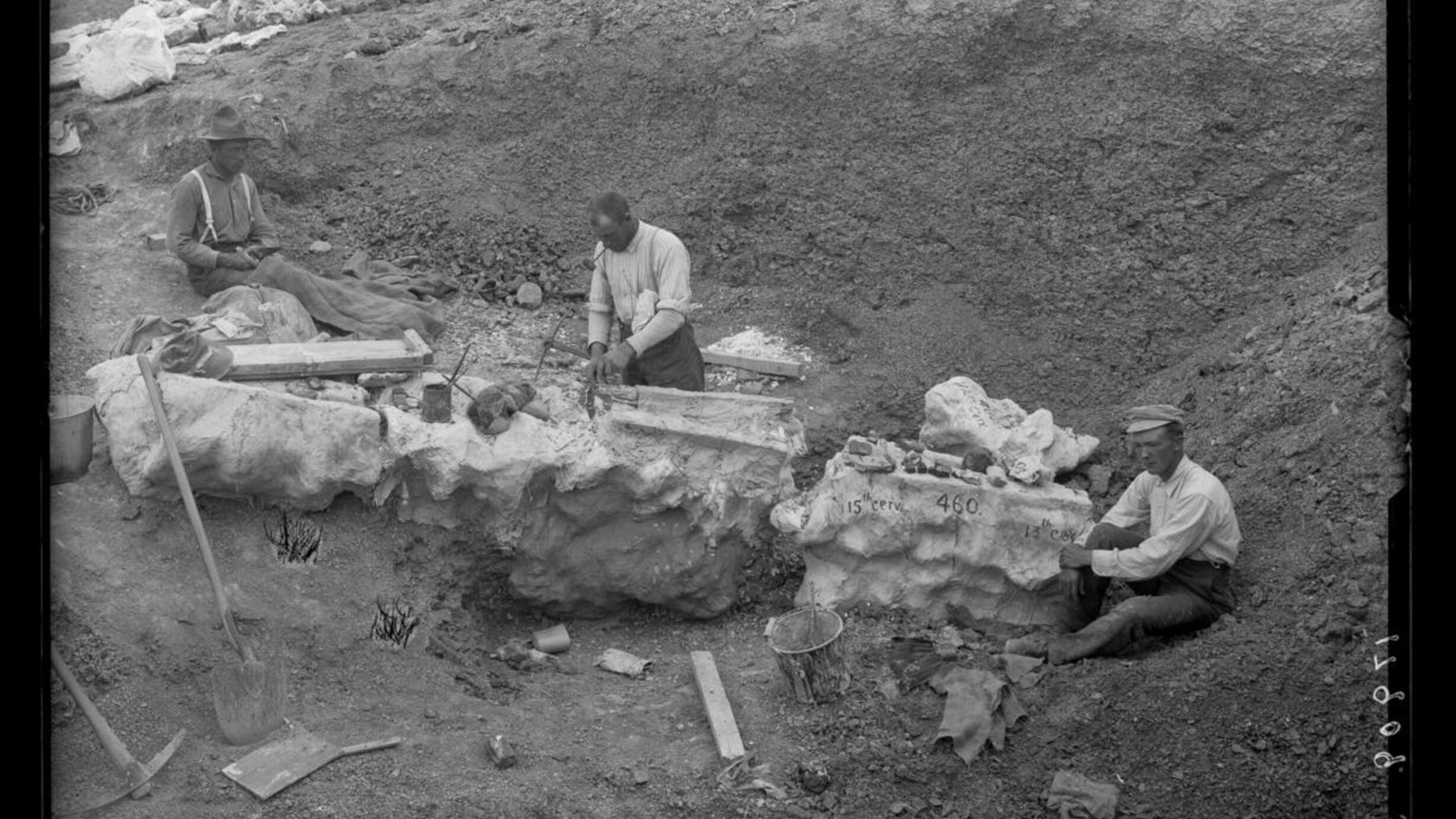 Plastering brontosaurus vertebrae, Nine Mile Quarry, Wyoming, 1899, AMNH Library Image #17909
Plastering brontosaurus vertebrae, Nine Mile Quarry, Wyoming, 1899, AMNH Library Image #17909A. Thomson/© AMNH
As new interns in the Vertebrate Paleontology (VP) Archives, our main task was to compile a list of VP expeditions from the founding of the department (in 1891) onwards. Despite its importance to the department, a comprehensive list of this kind has not existed. Attempts to identify formal names for the expeditions had been made in the past using the Research Library’s photo card files and other methods. Under a previous grant, the Research Library published a list of Museum-wide expeditions based on their vertical files (a collection of loose materials, such as news clippings, articles, and other types of related published content, organized in a series by subject). With the exception of a handful of renowned expeditions (e.g., Central Asiatic Expeditions where fossilized eggs were discovered in Mongolia), those efforts uncovered helpful data, though preliminary.
The purpose of our work was to unify the defining details for each year the Department sent people out to the field in a shared document. Gathering this information in one place will aid in the creation of official expedition names. Compiling this list of expedition authority metadata is essential to contemporary research due to the nature of electronic resource searching. With unique expedition names we can link collections, objects, and other resources to each other. Our success in compiling the data for these records was due to our unique access to the VP Archives’ collections in conjunction with the Research Library’s resources.
Unknown/© AMNH
The impact of this work reaches beyond the Vertebrate Paleontology department. The structure of the Museum’s various archives means that related materials may end up across multiple repositories. Naming each expedition allows for data from different departments to be linked together—connecting fossils, photographs, and other materials to the expeditions on which they were collected. The metadata that will appear in each file, such as locations and participants, will facilitate deeper research by making connections between expeditions. Linking together people authority files, location tags, and expeditions shows important relationships across the Museum’s databases.
B. Brown/© AMNH
R. T. Bird/© AMNH
To split up the task, we took alternate sets of years in the annual reports spanning from 1891 to 1975 and made our own spreadsheets. We used the spreadsheets to record the name of the expedition, the dates, the locations each expedition covered, the participants, and any mention of funders. While working, we discovered that most of the expeditions did not fit cleanly into this format. Many did not have specific date ranges or participants. Other sets of expeditions were grouped together in one sentence, leaving room for interpretation of how many locations the paleontologists may have visited at once. Members of the department returned to the same sites many times over different field seasons. Most noticeably, the majority of the expeditions did not have formally recorded names.
R. C. Andrews/© AMNH
J. Shackelford/© AMNH
While we may have been discouraged by the apparent gaps in data, we kept to task and made our way through all the annual reports in the VP Archives’ collections. We combined the data from both spreadsheets into a complete list, filling in some of each other’s gaps and clarifying any discrepancies with specialists in the Department of Vertebrate Paleontology.
The next step will be to work with the Research Library’s Cataloging and Metadata Librarian, Iris Lee, to finish cleaning up our data and create authority files for the expeditions on ArchivesSpace. For those expeditions without apparent formal names, we will need to come up with a uniform naming system based on the locations and dates provided. Our work to create a more unified set of authority files will benefit researchers by streamlining their work into a more cohesive and linked network.